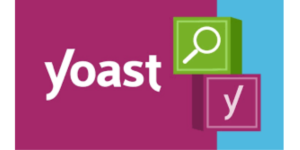1. Grammarly: Polishing Your Content
 Grammarly is an indispensable tool for bloggers who want to ensure their writing is clear, concise, and error-free. This tool checks your text for grammar, punctuation, and spelling mistakes, but it also goes beyond basic corrections. Grammarly offers suggestions for improving sentence structure, enhancing vocabulary, and refining tone. Whether you’re drafting a blog post, an email, or a social media update, Grammarly helps you communicate effectively and professionally. It also provides a plagiarism checker, which ensures your content is original. With Grammarly’s browser extension and desktop app, you can polish your writing across multiple platforms seamlessly.
Grammarly is an indispensable tool for bloggers who want to ensure their writing is clear, concise, and error-free. This tool checks your text for grammar, punctuation, and spelling mistakes, but it also goes beyond basic corrections. Grammarly offers suggestions for improving sentence structure, enhancing vocabulary, and refining tone. Whether you’re drafting a blog post, an email, or a social media update, Grammarly helps you communicate effectively and professionally. It also provides a plagiarism checker, which ensures your content is original. With Grammarly’s browser extension and desktop app, you can polish your writing across multiple platforms seamlessly.
2.Yoast SEO: Optimize Your Content for Search Engines
 Yoast SEO is a powerful WordPress plugin designed to help bloggers optimize their content for search engines. It provides real-time feedback and suggestions on how to improve your posts’ SEO performance. Key features include keyword optimization, readability analysis, and meta description editing. Yoast SEO helps you structure your content with proper headings and subheadings, use internal and external links effectively, and create SEO-friendly URLs. Additionally, it offers insights into social media sharing and schema markup, making your content more attractive to both search engines and social media platforms. By following Yoast SEO’s recommendations, you can increase your blog’s visibility and attract more organic traffic.
Yoast SEO is a powerful WordPress plugin designed to help bloggers optimize their content for search engines. It provides real-time feedback and suggestions on how to improve your posts’ SEO performance. Key features include keyword optimization, readability analysis, and meta description editing. Yoast SEO helps you structure your content with proper headings and subheadings, use internal and external links effectively, and create SEO-friendly URLs. Additionally, it offers insights into social media sharing and schema markup, making your content more attractive to both search engines and social media platforms. By following Yoast SEO’s recommendations, you can increase your blog’s visibility and attract more organic traffic.
3.Canva: Create Stunning Graphics
 Canva is a user-friendly graphic design tool that enables bloggers to create visually appealing images, infographics, and social media posts without needing advanced design skills. It offers a vast library of templates, images, icons, and fonts, allowing you to produce professional-quality visuals quickly. Canva’s drag-and-drop interface makes it easy to customize templates to match your brand’s style. Whether you need a new blog header, a promotional graphic, or an eye-catching Pinterest pin, Canva has the tools to help you stand out. High-quality visuals not only enhance your blog’s aesthetic appeal but also improve reader engagement and social media sharing.
Canva is a user-friendly graphic design tool that enables bloggers to create visually appealing images, infographics, and social media posts without needing advanced design skills. It offers a vast library of templates, images, icons, and fonts, allowing you to produce professional-quality visuals quickly. Canva’s drag-and-drop interface makes it easy to customize templates to match your brand’s style. Whether you need a new blog header, a promotional graphic, or an eye-catching Pinterest pin, Canva has the tools to help you stand out. High-quality visuals not only enhance your blog’s aesthetic appeal but also improve reader engagement and social media sharing.
4.Google Analytics: Track Your Blog’s Performance
 Google Analytics is a comprehensive tool for tracking and analyzing your blog’s performance. It provides detailed insights into your audience’s behavior, including how they find your site, which pages they visit, and how long they stay. You can monitor key metrics such as page views, bounce rates, and conversion rates. Google Analytics also helps you understand your audience demographics, such as age, gender, and location. By analyzing this data, you can make informed decisions to improve your content strategy, enhance user experience, and increase your blog’s reach. Setting up goals and tracking conversions can also help you measure the effectiveness of your marketing efforts.
Google Analytics is a comprehensive tool for tracking and analyzing your blog’s performance. It provides detailed insights into your audience’s behavior, including how they find your site, which pages they visit, and how long they stay. You can monitor key metrics such as page views, bounce rates, and conversion rates. Google Analytics also helps you understand your audience demographics, such as age, gender, and location. By analyzing this data, you can make informed decisions to improve your content strategy, enhance user experience, and increase your blog’s reach. Setting up goals and tracking conversions can also help you measure the effectiveness of your marketing efforts.
5.Trello: Organize Your Blogging Tasks

Trello is a versatile project management tool that helps bloggers organize their tasks and projects visually. It uses boards, lists, and cards to represent projects and tasks, making it easy to see what needs to be done and track progress. You can create an editorial calendar, plan blog posts, brainstorm ideas, and manage your workflow all in one place. Trello’s flexibility allows you to customize boards with labels, due dates, and checklists. You can also collaborate with team members by assigning tasks and adding comments. Trello’s integration with other tools like Google Drive and Slack further enhances its functionality, making it an essential tool for staying organized and productive.
6. Ahrefs: Conduct Keyword Research
 Ahrefs is a comprehensive SEO tool that provides in-depth data on keywords, backlinks, and competitor analysis. It helps bloggers identify the best keywords to target, understand their search volume and difficulty, and discover content gaps. Ahrefs’ Site Explorer allows you to analyze your competitors’ websites, see which keywords they rank for, and uncover their backlink profiles. The Content Explorer feature helps you find popular content in your niche, giving you ideas for topics that attract high traffic and engagement. By using Ahrefs, you can develop a robust SEO strategy, improve your search engine rankings, and drive more organic traffic to your blog.
Ahrefs is a comprehensive SEO tool that provides in-depth data on keywords, backlinks, and competitor analysis. It helps bloggers identify the best keywords to target, understand their search volume and difficulty, and discover content gaps. Ahrefs’ Site Explorer allows you to analyze your competitors’ websites, see which keywords they rank for, and uncover their backlink profiles. The Content Explorer feature helps you find popular content in your niche, giving you ideas for topics that attract high traffic and engagement. By using Ahrefs, you can develop a robust SEO strategy, improve your search engine rankings, and drive more organic traffic to your blog.
7. Mailchimp: Build and Manage Your Email List
 Mailchimp is a powerful email marketing tool that helps bloggers build and manage their email subscriber lists. It offers a range of features for creating and sending email campaigns, including customizable templates, automation workflows, and detailed analytics. Mailchimp’s segmentation options allow you to target specific groups within your audience with personalized content. Its automation features enable you to set up welcome emails, drip campaigns, and re-engagement campaigns, ensuring consistent communication with your subscribers. By using Mailchimp, you can nurture relationships with your readers, drive traffic to your blog, and increase conversions through targeted email marketing.
Mailchimp is a powerful email marketing tool that helps bloggers build and manage their email subscriber lists. It offers a range of features for creating and sending email campaigns, including customizable templates, automation workflows, and detailed analytics. Mailchimp’s segmentation options allow you to target specific groups within your audience with personalized content. Its automation features enable you to set up welcome emails, drip campaigns, and re-engagement campaigns, ensuring consistent communication with your subscribers. By using Mailchimp, you can nurture relationships with your readers, drive traffic to your blog, and increase conversions through targeted email marketing.
8.Buffer: Schedule Social Media Posts
 Buffer is a social media management tool that allows bloggers to schedule and publish posts across multiple social media platforms. It helps you maintain a consistent posting schedule, saving you time and effort. Buffer’s intuitive interface lets you queue up posts, customize them for different platforms, and set optimal posting times. Its analytics feature provides insights into your social media performance, showing you which posts are driving engagement and traffic. Buffer also offers a browser extension, making it easy to share content from anywhere on the web. By using Buffer, you can enhance your social media presence, reach a wider audience, and drive more traffic to your blog.
Buffer is a social media management tool that allows bloggers to schedule and publish posts across multiple social media platforms. It helps you maintain a consistent posting schedule, saving you time and effort. Buffer’s intuitive interface lets you queue up posts, customize them for different platforms, and set optimal posting times. Its analytics feature provides insights into your social media performance, showing you which posts are driving engagement and traffic. Buffer also offers a browser extension, making it easy to share content from anywhere on the web. By using Buffer, you can enhance your social media presence, reach a wider audience, and drive more traffic to your blog.
9. WordPress: The Ultimate Blogging Platform
 WordPress is the most popular blogging platform, offering a robust and flexible solution for bloggers of all levels. It provides thousands of themes and plugins, allowing you to customize your blog’s appearance and functionality. WordPress is user-friendly, yet powerful enough to handle complex websites. It supports SEO best practices, responsive design, and various media formats. With WordPress, you have full control over your content and the ability to scale your blog as it grows. Whether you’re a beginner or an experienced blogger, WordPress offers the tools and resources you need to create a professional and successful blog.
WordPress is the most popular blogging platform, offering a robust and flexible solution for bloggers of all levels. It provides thousands of themes and plugins, allowing you to customize your blog’s appearance and functionality. WordPress is user-friendly, yet powerful enough to handle complex websites. It supports SEO best practices, responsive design, and various media formats. With WordPress, you have full control over your content and the ability to scale your blog as it grows. Whether you’re a beginner or an experienced blogger, WordPress offers the tools and resources you need to create a professional and successful blog.
10. Evernote: Capture Ideas on the Go
 Evernote is a note-taking app that helps bloggers capture and organize ideas, research, and to-do lists. It allows you to create notes, add images, voice recordings, and web clippings, and organize them into notebooks. Evernote’s search function makes it easy to find information quickly. It syncs across all your devices, ensuring you have access to your notes wherever you are. Whether you’re brainstorming blog post ideas, conducting research, or planning your editorial calendar, Evernote helps you stay organized and productive. By capturing ideas as they come, you can ensure you never lose a great thought or inspiration.
Evernote is a note-taking app that helps bloggers capture and organize ideas, research, and to-do lists. It allows you to create notes, add images, voice recordings, and web clippings, and organize them into notebooks. Evernote’s search function makes it easy to find information quickly. It syncs across all your devices, ensuring you have access to your notes wherever you are. Whether you’re brainstorming blog post ideas, conducting research, or planning your editorial calendar, Evernote helps you stay organized and productive. By capturing ideas as they come, you can ensure you never lose a great thought or inspiration.
Conclusion
Using these top 10 tools every blogger needs in 2024 will significantly enhance your blogging efforts. From writing and SEO optimization to graphic design and social media management, these best resources and tools for effective blogging will help you create high-quality content, grow your audience, and achieve your blogging goals. Start integrating these essential blogging tools into your workflow today and watch your blog thrive.







